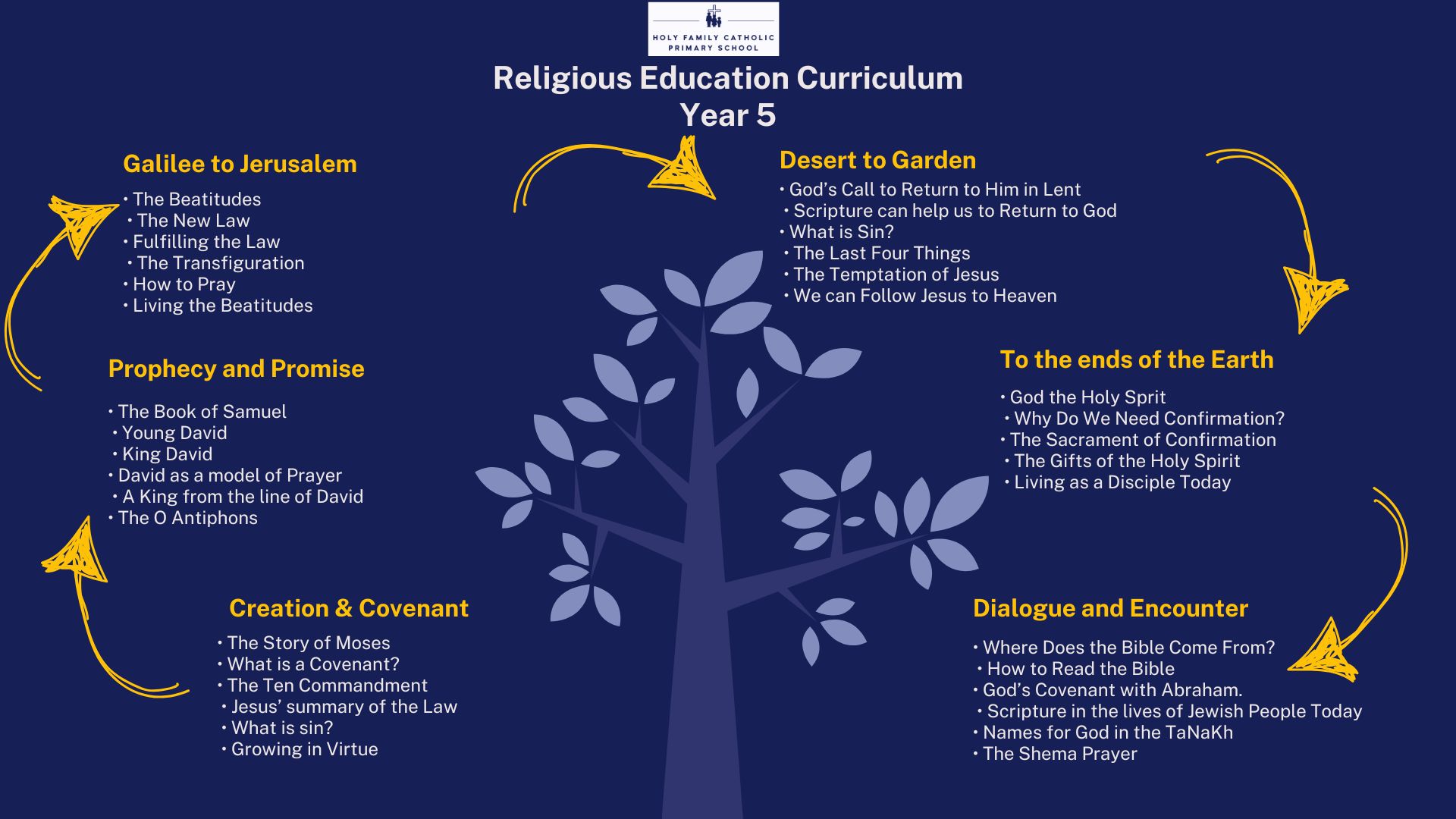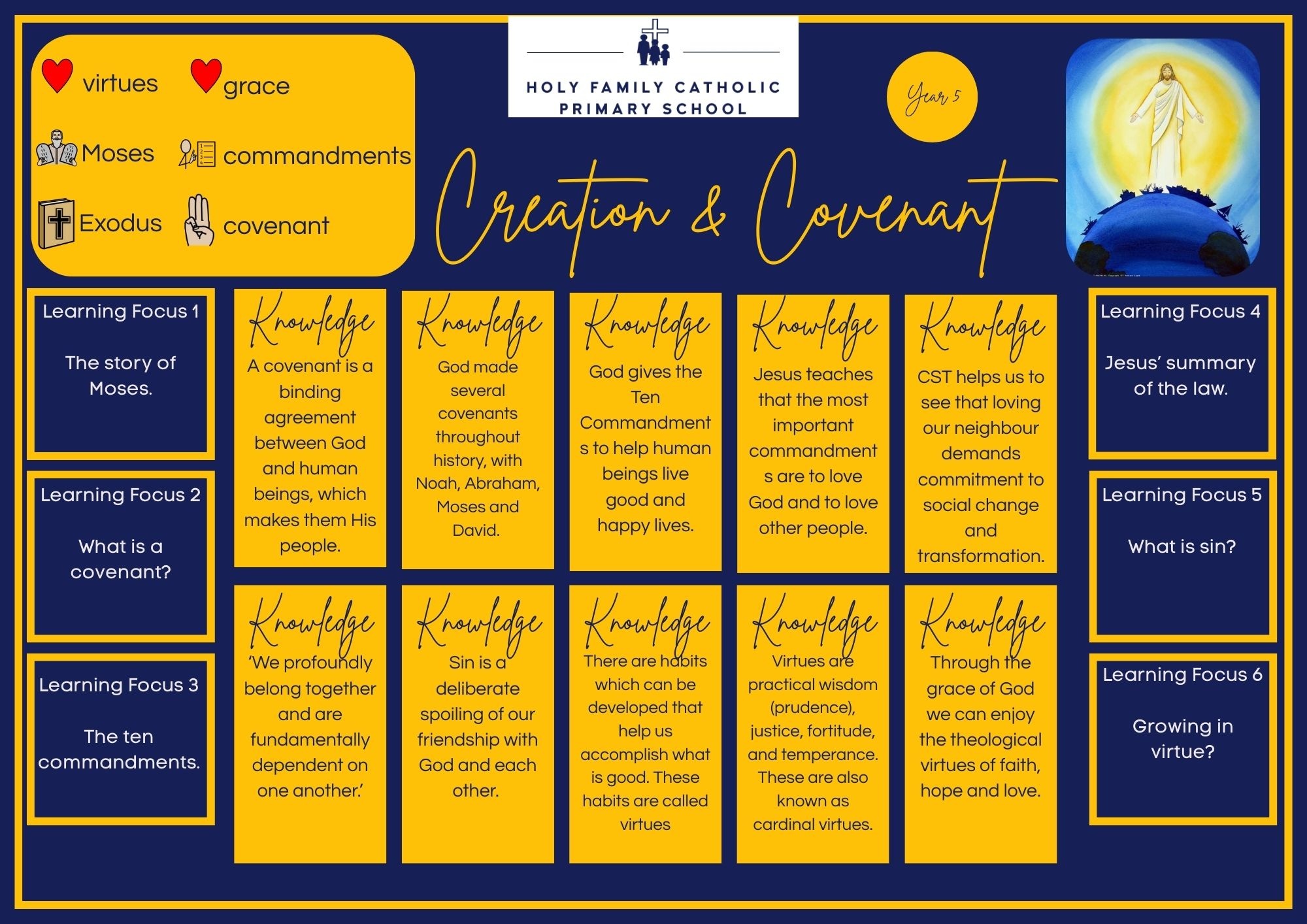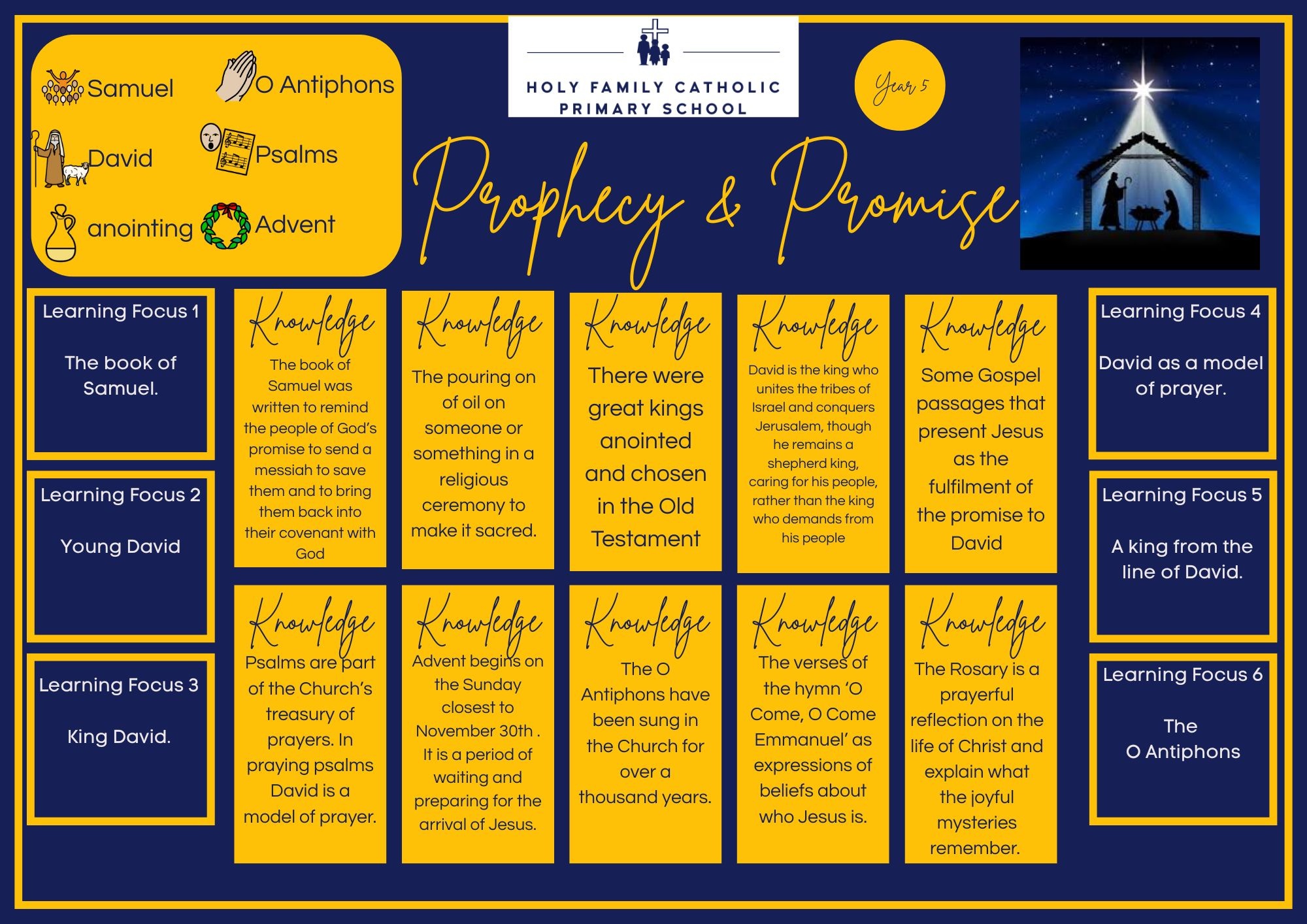Religious Education

In line with our fellow Diocesan schools, we follow the Diocesan lesson plans based on the new RED. This curriculum seeks to present the teaching of religious education in a sequential and progressive form. The framework has four structural elements:
- Knowledge lenses which indicate what should be known by the end of each age phase. These are split into hear, believe, live and celebrate.
- The ‘ways of knowing’ are the skills which develop as the children progress through their curriculum journey. These are split into understand, discern and respond.
- Expected outcomes are set for each age phase and indicate what pupils are expected to know, remember and be able to do.
- Curriculum branches are the way the programme of study presents its model curriculum. There are six half term branches for each half term which are the same in each year group.
Through this year the class will reflect on the significance of the Old Testament as part of Christian understanding of the revelation of Jesus. In the first two branches, pupils will explore Moses and David. Moses is the lawgiver and the one who leads the people of Israel out of slavery. David is the great king who is a shepherd to his people.
Learners have opportunities to understand how to read the Bible, recognising stories meant to the people at the time of telling and what they mean to us now. For example, in the O Antiphons the scriptural references from Isaiah point to Jesus and the incarnation.
They will look at the Ten Commandments and at Jesus’ summary of the Law and how this speaks to us today. They will learn about the Sacrament of Confirmation where people choose to be anointed as a disciple of Christ and seek to follow his teachings and reflect on the last things. They will spend some time thinking about the Bible itself. They will also develop a deeper understanding of Sacred Scripture in the Jewish religion.

Knowledge Organisers for each branch can be found below.



